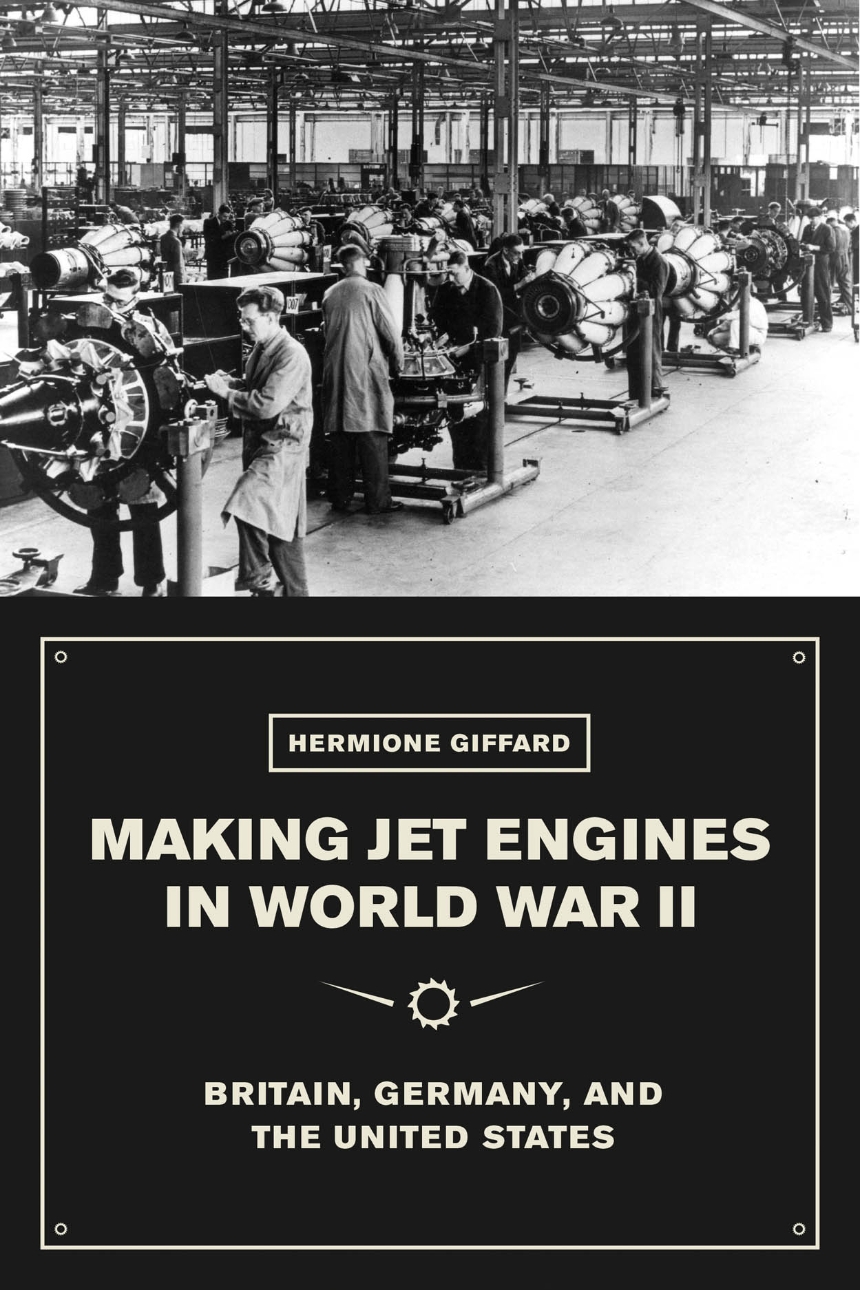Making Jet Engines in World War II
Britain, Germany, and the United States
9780226388595
9780226388625
Making Jet Engines in World War II
Britain, Germany, and the United States
Our stories of industrial innovation tend to focus on individual initiative and breakthroughs. With Making Jet Engines in World War II, Hermione Giffard uses the case of the development of jet engines to offer a different way of understanding technological innovation, revealing the complicated mix of factors that go into any decision to pursue an innovative, and therefore risky technology.
Giffard compares the approaches of Britain, Germany, and the United States. Each approached jet engines in different ways because of its own war aims and industrial expertise. Germany, which produced more jet engines than the others, did so largely as replacements for more expensive piston engines. Britain, on the other hand, produced relatively few engines—but, by shifting emphasis to design rather than production, found itself at war's end holding an unrivaled range of designs. The US emphasis on development, meanwhile, built an institutional basis for postwar production. Taken together, Giffard's work makes a powerful case for a more nuanced understanding of technological innovation, one that takes into account the influence of the many organizational factors that play a part in the journey from idea to finished product.
Giffard compares the approaches of Britain, Germany, and the United States. Each approached jet engines in different ways because of its own war aims and industrial expertise. Germany, which produced more jet engines than the others, did so largely as replacements for more expensive piston engines. Britain, on the other hand, produced relatively few engines—but, by shifting emphasis to design rather than production, found itself at war's end holding an unrivaled range of designs. The US emphasis on development, meanwhile, built an institutional basis for postwar production. Taken together, Giffard's work makes a powerful case for a more nuanced understanding of technological innovation, one that takes into account the influence of the many organizational factors that play a part in the journey from idea to finished product.
336 pages | 34 halftones, 2 line drawings, 3 tables | 6 x 9 | © 2016
History: American History, British and Irish History, European History, History of Technology, Military History
Reviews
Table of Contents
List of Abbreviations
Introduction
Chapter 1. Turbojet Production during World War IIIntroduction
Britain’s Turbojet Engines
Competition in Britain
Abandoning the W.2B
Abandoning the W.2B
United States (American Turbojet Engines)
Production and Improvement in the United States
Prospects for the H.1
Prospects for the H.1
Turbojet Engine Production in Germany
Production Underground
The Remarkable Production of Ersatz Aero-Engines
The Remarkable Production of Ersatz Aero-Engines
Conclusion
Chapter 2. The Aero-Engine Industry and Turbojet DevelopmentRolls-Royce and the Turbojet
Rolls-Royce’s First Internal Combustion Turbine
The Whittle-Rolls-Royce Engine
Rolls-Royce at Barnoldswick
Back at Derby
The Whittle-Rolls-Royce Engine
Rolls-Royce at Barnoldswick
Back at Derby
The British Aero-Engine Industry
De Havilland’s New Engine
Armstrong Siddeley Motors Changes Course
Bristol Aircraft Company Is of Two Minds
D. Napier and Son
Armstrong Siddeley Motors Changes Course
Bristol Aircraft Company Is of Two Minds
D. Napier and Son
The German Aero-Engine Industry
Junkers Motorenwerke
Bramo and BMW: A Good Team
Daimler-Benz Makes Time for Turbojets
Bramo and BMW: A Good Team
Daimler-Benz Makes Time for Turbojets
Development in the United States
The NACA Starts Work
The Air Force Pushes Development
General Electric
The Air Force Pushes Development
General Electric
Conclusion
Chapter 3. Inventive InstitutionsInventors
Power Jets
Small Beginnings
The Contradiction of Power Jets
Rapid Growth
A National Resource
The Royal Aircraft Establishment
The End: Government Company and Back Again
The Contradiction of Power Jets
Rapid Growth
A National Resource
The Royal Aircraft Establishment
The End: Government Company and Back Again
The Ernst Heinkel Flugzeug Werke
The Beginning of EHFW’s Turbojet Work
The Inexorable Expansion of EHFW’s Turbojet Program
New Prospects for von Ohain
The Inexorable Expansion of EHFW’s Turbojet Program
New Prospects for von Ohain
Conclusion
Chapter 4. The Construction of a HeroThe Jet Story Enters the Public Domain
Publicity after the First Press Release
Relations between the British Government and Its Inventor-Hero
New Medium, Old Story
Relations between the British Government and Its Inventor-Hero
New Medium, Old Story
The First Academic Histories
Historiographical Success
Historiographical Success
The German Challenge
Birth of the Dual-Inventor Narrative in the United States
The Jet and the Rebirth of the History of German Aviation
The Jet and the Rebirth of the History of German Aviation
Professionals Borrow the Tale
Conclusion
Conclusion. The Jet Engine and InnovationAppendix A. Power Jets Ltd., Schedule of Shareholders, November 1, 1943
Appendix B. Air Ministry Jet Publicity (1944–45)
First press release, January 6, 1944
Second press release, September 27, 1944
Third press release, February 28, 1945
Appendix C. Engine Comparison TableSecond press release, September 27, 1944
Third press release, February 28, 1945
Acknowledgments
Archives Consulted
Notes
Glossary
Bibliography
Index
Archives Consulted
Notes
Glossary
Bibliography
Index
